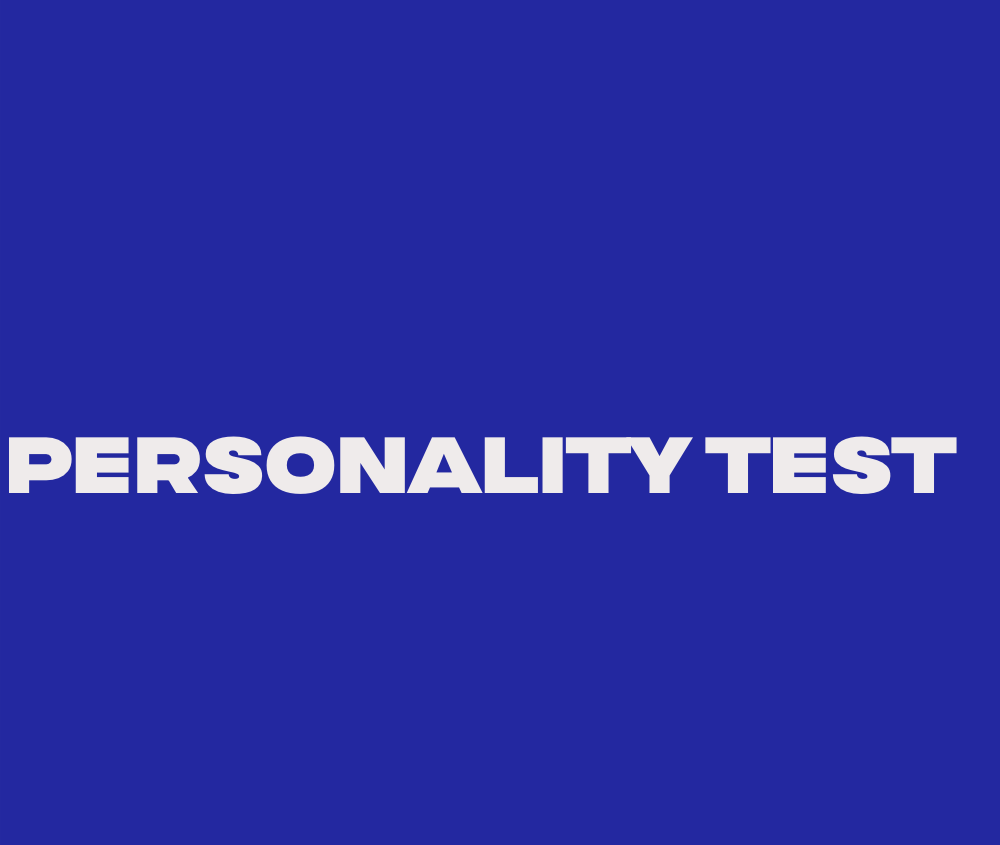Personality Exploration
Projective Personality Tests Quizlet Guide

Did you know that projective personality tests have been used for decades to gain insights into the deepest corners of the human mind? These psychological assessments, designed to reveal unconscious thoughts, emotions, and desires, have provided invaluable information to psychologists and professionals in various fields.
Now, you can dive into the world of projective personality tests and deepen your understanding with the help of Quizlet, the online learning platform with a wealth of resources at your fingertips. Our comprehensive Quizlet guide will equip you with the knowledge and tools you need to navigate the fascinating realm of projective personality tests.
Key Takeaways:
- Projective personality tests unveil hidden aspects of an individual’s personality by using ambiguous stimuli to elicit responses.
- These tests play a crucial role in clinical settings, helping professionals diagnose and treat mental health conditions.
- Common projective personality tests include the Rorschach inkblot test and the Thematic Apperception Test (TAT).
- Quizlet offers a range of study materials, including flashcards and practice quizzes, to enhance your understanding of projective personality tests.
- Using Quizlet for projective personality test study provides collaborative learning opportunities, performance tracking, and customizable study modes.
What Are Projective Personality Tests?
Projective personality tests are psychological assessments that utilize ambiguous stimuli to elicit responses from individuals. These tests are built on the premise that test-takers will project their unconscious thoughts and emotions onto the stimuli, consequently revealing hidden aspects of their personality.
Projective personality tests offer valuable insights into an individual’s psyche, allowing professionals to gain a deeper understanding of their underlying motives, conflicts, and psychological well-being. By uncovering these unconscious thoughts and emotions, these tests contribute to a more comprehensive assessment of an individual’s personality.
Examples of projective personality tests include the renowned Rorschach inkblot test and the Thematic Apperception Test (TAT). The Rorschach inkblot test involves presenting individuals with a series of 10 inkblots and asking them to interpret what they see. On the other hand, the Thematic Apperception Test (TAT) requires individuals to create stories based on ambiguous pictures, offering insight into their thought processes and emotional tendencies.
Projective personality tests provide a unique approach to understanding the intricacies of an individual’s personality by delving into their unconscious mind. These tests go beyond surface-level characteristics, aiming to uncover the hidden dimensions of an individual’s thoughts, emotions, and desires.
To better comprehend the nature of projective personality tests, let’s take a closer look at two of the most recognized assessments: the Rorschach inkblot test and the Thematic Apperception Test (TAT).
Rorschach Inkblot Test
The Rorschach inkblot test, developed by Hermann Rorschach in the 1920s, presents individuals with a series of inkblots and asks them to interpret what they see. The test-takers’ responses provide insights into their perceptual tendencies, emotional responses, and cognitive styles. It helps uncover their unique perspectives and underlying psychological processes.
Thematic Apperception Test (TAT)
The Thematic Apperception Test (TAT) involves showing individuals ambiguous pictures and prompting them to create stories based on these images. The narratives they construct help reveal their motivations, desires, fears, and conflicts, providing a deeper understanding of their personality structure and dynamics.

Rorschach inkblot testA test where individuals interpret a series of inkblots, providing insights into their perceptual tendencies, emotional responses, and cognitive styles.Thematic Apperception Test (TAT)A test involving ambiguous pictures, where individuals construct stories to uncover their motivations, desires, fears, and conflicts.
The Importance of Projective Personality Tests
Projective personality tests play a crucial role in understanding individuals on a deeper psychological level. These assessments provide valuable insights into an individual’s personality by uncovering hidden motives, conflicts, and issues that may not be readily apparent in other types of tests. Professionals in clinical settings often rely on projective personality tests to aid in the diagnosis and treatment of mental health conditions, as they offer a unique window into the unconscious thoughts and emotions of the test-taker.
By tapping into the depths of the mind, projective personality tests contribute to a more comprehensive understanding of an individual’s psychological well-being. They go beyond surface-level responses and delve into the subconscious, revealing aspects of personality that may otherwise remain concealed. This deeper understanding can inform therapeutic interventions, allowing mental health professionals to provide more tailored and effective treatments.
“Projective personality tests provide a window into the unconscious, allowing us to gain insights into an individual’s personality that may not be accessible through other means of assessment. They help us understand the deeper layers of the human mind and provide valuable information for therapeutic interventions.”
The Clinical Significance
In the field of psychology, projective personality tests hold great importance due to their clinical significance. They offer a unique approach to uncovering unconscious thoughts, allowing mental health professionals to gain a better understanding of the internal conflicts and complexities individuals may be experiencing. This knowledge is especially valuable for clinicians working with patients who struggle to verbalize their emotions or are unaware of their unconscious motivations.
Projective personality tests assist in diagnosing various mental health conditions, such as personality disorders, trauma-related disorders, and mood disorders. They can also shed light on an individual’s coping mechanisms, defense mechanisms, and overall psychological functioning. By revealing these underlying factors, projective personality tests aid in the development of more targeted treatment plans and therapeutic interventions.
Beyond Clinical Settings
While projective personality tests are extensively used in clinical settings, their significance extends beyond the realm of therapy. Industries such as human resources, forensic psychology, and market research utilize these tests to gain insights into individuals’ personality traits and behaviors. Projective personality tests can provide valuable information for hiring decisions, criminal profiling, and consumer research, allowing professionals in different fields to make informed judgments based on a person’s deeper psychological makeup.
Moreover, projective personality tests open avenues for self-reflection and personal growth. Individuals can gain a better understanding of their own unconscious thoughts, emotions, and motivations through these tests. This self-awareness can facilitate personal development, improve decision-making skills, and enhance interpersonal relationships.

The Bottom Line
Projective personality tests hold immense importance in understanding individuals’ psychological makeup and providing valuable insights into their personality. From diagnosing mental health conditions to informing therapeutic interventions and aiding decision-making processes in various fields, these tests offer a unique perspective into the depths of the human mind. By exploring unconscious thoughts and emotions, projective personality tests contribute to a more holistic understanding of individuals and their psychological well-being.
Common Projective Personality Tests
There are several commonly used projective personality tests that provide valuable insights into individuals’ unconscious thoughts and emotions. These tests help professionals understand underlying motives, conflicts, and issues. Let’s explore some of the most popular projective personality tests:
Rorschach Inkblot Test
The Rorschach inkblot test is a widely known projective personality test. It involves presenting individuals with 10 inkblots and asking them to interpret what they see. The test-takers’ responses are believed to reflect their unconscious thoughts and perceptions. This test is widely used in clinical settings and can offer valuable insights into an individual’s personality.
Thematic Apperception Test (TAT)
The Thematic Apperception Test (TAT) is another commonly used projective personality test. It consists of showing individuals ambiguous pictures and asking them to create stories about the images. The stories they create are then analyzed to understand their underlying motivations, fears, and desires. The TAT provides a deeper understanding of an individual’s personality and can be used in various contexts, including research and clinical assessments.
House-Tree-Person Test
The House-Tree-Person test is a projective personality test where individuals are asked to draw a house, a tree, and a person. The drawings are then interpreted to gain insights into the test-takers’ personality characteristics, emotional state, and cognitive functioning. This test can be used to assess a wide range of psychological issues, such as emotional disturbances and cognitive impairments.
Sentence Completion Test
The Sentence Completion Test is a projective personality assessment where individuals are given incomplete sentences and asked to complete them with their own thoughts and feelings. These responses are analyzed to reveal unconscious aspects of the test-takers’ personality and provide insights into their self-perception, motivations, and attitudes. This test can be a valuable tool in understanding an individual’s underlying psychological dynamics.
These projective personality tests offer unique ways to explore an individual’s unconscious thoughts and emotions. Each test provides valuable insights into different aspects of personality, contributing to a better understanding of psychological well-being.

Using Quizlet for Projective Personality Test Study
Quizlet offers a wide range of study materials for individuals interested in learning about projective personality tests. With Quizlet, you can access flashcards, practice quizzes, and study sets created by other Quizlet users. These resources provide an interactive and engaging way to review concepts and enhance your understanding of projective personality tests.
One of the key advantages of Quizlet is its extensive library of user-generated content. You can benefit from the shared knowledge and expertise of other learners, who have created study materials specifically tailored to projective personality tests. By leveraging these resources, you can gain different perspectives and deepen your insights into this fascinating field of psychology.
Quizlet’s mobile app allows you to study on the go, making it convenient and accessible for learners with busy schedules. Whether you’re commuting, waiting for an appointment, or taking a break, you can make the most of your time by reviewing projective personality test concepts using Quizlet.
Engaging with Quizlet for your projective personality test study can provide a significant boost to your learning experience. By utilizing these study materials, you can reinforce your knowledge, practice important concepts, and increase your confidence in understanding and interpreting projective personality tests.

With Quizlet’s user-friendly interface and diverse study modes, you have the flexibility to customize your learning process. Whether you prefer flashcards, practice quizzes, or interactive study sets, Quizlet has the resources to accommodate your learning style.
“Quizlet has been a game-changer for my projective personality test study. The flashcards and study sets have helped me grasp complex concepts and memorize important information. It’s become an essential tool in my learning journey.” – Sarah, Psychology Student
Quizlet also offers performance tracking tools that enable you to monitor your progress and identify areas for improvement. By leveraging these features, you can set goals, track your learning milestones, and stay motivated throughout your projective personality test study.
Benefits of Using Quizlet for Projective Personality Test Study:
- Access to a vast library of study materials created by other Quizlet users
- Interactive and engaging resources, such as flashcards and practice quizzes
- Convenient mobile app for studying on the go
- Multiple study modes to cater to individual learning preferences
- Performance tracking tools for monitoring progress and setting goals
By utilizing Quizlet for your projective personality test study, you can enhance your learning experience and gain a deeper understanding of this fascinating field. Quizlet’s comprehensive study materials, user-generated content, and convenient mobile app make it an invaluable resource for learners pursuing knowledge in projective personality tests.
Benefits of Using Quizlet for Projective Personality Test Study
Using Quizlet for projective personality test study offers numerous benefits. The platform provides a collaborative learning environment where users can engage with study materials created by others. Quizlet’s spaced repetition feature helps reinforce knowledge and improve long-term retention. The platform also offers various study modes, allowing users to customize their learning experience. Furthermore, Quizlet provides performance tracking tools, enabling users to monitor their progress and identify areas for improvement.
Collaborative Learning Environment
Quizlet provides a collaborative learning environment where users can access study materials created by others. By leveraging the collective knowledge and insights of the Quizlet community, individuals studying projective personality tests can benefit from a wide range of perspectives and resources. This collaborative aspect enhances the learning experience and promotes a deeper understanding of the subject matter.
Spaced Repetition for Improved Retention
Quizlet’s spaced repetition feature is a powerful tool for enhancing knowledge retention. By strategically timing the review of study materials, Quizlet ensures that information is reinforced at optimal intervals. This technique has been shown to improve long-term retention and facilitate better recall during exams or assessments.
Customizable Study Modes
Quizlet offers various study modes that cater to different learning preferences. Whether users prefer flashcards, quizzes, or other interactive study methods, Quizlet provides the flexibility to customize the learning experience. This adaptability allows individuals to choose the study mode that best suits their learning style, making the process more engaging and effective.
Performance Tracking Tools
Quizlet’s performance tracking tools enable users to monitor their progress and identify areas for improvement. By tracking study sessions, quiz scores, and other performance metrics, individuals can gain valuable insights into their strengths and weaknesses. This data-driven approach allows for targeted studying and ensures that time is spent on areas that need further attention.

| Benefits | Quizlet | Traditional Study Methods |
|---|---|---|
| Collaborative Learning Environment | ✔ | |
| Spaced Repetition for Improved Retention | ✔ | |
| Customizable Study Modes | ✔ | |
| Performance Tracking Tools | ✔ |
Tips for Effective Projective Personality Test Study on Quizlet
To maximize the effectiveness of projective personality test study on Quizlet, consider the following tips:
- Create your own flashcards to reinforce learning.
- Engage with the Quizlet community and explore study sets created by others.
- Utilize different study modes to cater to your learning preferences.
- Set achievable goals and track your progress regularly.
- Make use of Quizlet’s mobile app to study anytime, anywhere.

By following these tips, you can enhance your study experience on Quizlet and make the most of its resources for projective personality test learning.
Resources for Further Exploration
If you are interested in delving deeper into projective personality tests, there are several additional resources you can explore. Books such as “Projective Techniques in Personality Assessment” by Karen Machover and “The Thematic Apperception Test: The Theory and Technique of Interpretation” by Joseph D. Lichtenberg provide in-depth information on specific tests. Online articles and research papers can also provide valuable insights into the field of projective personality testing.
By referring to these resources, you can augment your knowledge and understanding of projective personality tests, enhancing your proficiency in this area of study.

“Projective Techniques in Personality Assessment” by Karen Machover is a comprehensive guide that delves into various projective personality tests, their administration, and interpretation. This book offers valuable insights into the theoretical foundations of these tests and their applications in the field of personality assessment.
“The Thematic Apperception Test: The Theory and Technique of Interpretation” by Joseph D. Lichtenberg is an authoritative resource that focuses specifically on the Thematic Apperception Test (TAT). This book provides a deep understanding of the test’s underlying principles, interpretation techniques, and clinical applications.
“Projective personality tests offer a unique window into individuals’ unconscious thoughts and emotions. By exploring resources such as books and research papers, learners can gain a comprehensive understanding of these tests and deepen their knowledge in this fascinating field of psychology.”
Additionally, online articles and research papers can provide valuable insights and keep you up to date with the latest developments and advancements in projective personality testing. Make use of academic databases and search engines to discover scholarly articles and research studies that delve into specific aspects of projective personality tests.
Limitations of Projective Personality Tests
While projective personality tests can offer valuable insights into individuals’ unconscious thoughts and emotions, it is crucial to consider their limitations. These tests rely heavily on subjective interpretations, making them susceptible to the biases of the examiner. This subjectivity can introduce potential inaccuracies and inconsistencies in the results, limiting their reliability.
Moreover, projective personality tests require extensive training and expertise to administer and interpret accurately. The complexity of these tests makes it crucial to have professionals who are well-versed in the specific methodologies and theories behind each test. Without proper training, misinterpretations can occur, leading to erroneous conclusions about an individual’s personality traits or psychological well-being.
To mitigate these limitations, projective personality tests should be used in conjunction with other assessment methods for a comprehensive evaluation. By considering various sources of information and combining different psychological tests, professionals can attain a more holistic understanding of an individual’s personality and psychological profile.
Overall, while projective personality tests have their merits, it is essential to recognize their constraints and approach their interpretation with caution and expertise.
Conclusion
This comprehensive guide has provided an overview of projective personality tests and how Quizlet can support your study of these assessments. Projective personality tests offer unique insights into individuals’ unconscious thoughts and emotions, contributing to a more thorough understanding of their personality and mental well-being. By utilizing Quizlet’s resources and following effective study strategies, you can enhance your understanding of projective personality tests and their applications in the field of psychology.
Whether you are a student looking to expand your knowledge or a professional in the field of psychology, Quizlet can be a valuable tool for studying projective personality tests. With its wide range of study materials and interactive features, Quizlet provides an engaging and accessible platform to deepen your understanding of these assessments. By harnessing the power of Quizlet, you can develop a solid foundation in projective personality testing and apply it to various areas of psychological research and practice.
Remember, projective personality tests are just one piece of the puzzle when it comes to understanding individuals’ complex inner worlds. While these tests can provide valuable insights, it is important to consider their limitations and use them in conjunction with other assessment methods. By taking a comprehensive approach, you can ensure a more accurate and holistic understanding of individuals’ personalities and psychological well-being.
Yes, you can use the Jordan Peterson personality test as a projective personality test. The test measures the Big Five personality traits and can be a useful tool for understanding an individual’s underlying psychological traits and tendencies. It’s important to use it in conjunction with other assessment methods for a comprehensive understanding. Projective personality tests are psychological assessments that use ambiguous stimuli to elicit responses from individuals. These tests aim to reveal a person’s unconscious thoughts, feelings, and desires by having test-takers project their hidden aspects of personality onto the stimuli.
Quizlet is an online learning platform that offers resources for studying various topics. It provides flashcards, practice quizzes, and study sets created by users, including materials for projective personality tests.
Projective personality tests provide valuable insights into an individual’s personality, helping professionals understand underlying motives, conflicts, and issues. They are particularly useful in clinical settings for diagnosing and treating mental health conditions.
Common projective personality tests include the Rorschach inkblot test, the Thematic Apperception Test (TAT), the House-Tree-Person test, and the Sentence Completion Test.
Quizlet offers a wide range of study materials for projective personality tests, including flashcards, practice quizzes, and study sets created by other users. Its mobile app allows for convenient and on-the-go studying. Using Quizlet for projective personality test study provides a collaborative learning environment, spaced repetition for reinforcing knowledge, customizable study modes, and performance tracking tools to monitor progress and identify areas for improvement.
Some tips for effective projective personality test study on Quizlet include creating your own flashcards, engaging with the Quizlet community, utilizing different study modes, setting achievable goals, and making use of the mobile app for studying anytime, anywhere.
Further exploration of projective personality tests can be done through books such as “Projective Techniques in Personality Assessment” by Karen Machover and “The Thematic Apperception Test: The Theory and Technique of Interpretation” by Joseph D. Lichtenberg, as well as online articles and research papers.
Projective personality tests rely on subjective interpretations and can be influenced by the biases of the examiner. The results may not always be reliable or consistent. Additionally, administering and interpreting these tests accurately requires extensive training and expertise.
Can I Use the Jordan Peterson Personality Test as a Projective Personality Test?
FAQ
What are projective personality tests?
What is Quizlet?
Why are projective personality tests important?
What are some common projective personality tests?
How can Quizlet support projective personality test study?
What are the benefits of using Quizlet for projective personality test study?
What tips can be helpful for effective projective personality test study on Quizlet?
What are some resources for further exploration of projective personality tests?
What are the limitations of projective personality tests?
Eugene brings a fresh, dynamic voice to our platform as one of our talented Writers. Specializing in research-driven content, he explores the latest findings in psychology and personal growth, translating them into actionable insights for our readers. Eugene’s work is fueled by a curiosity about what makes us tick and a desire to help others unlock their potential.
The Big Five (OCEAN)
What Is the Tax Assessment for 1320 Vina Ave Ocean Nj?
Tantalizingly close to uncovering the tax assessment for 1320 Vina Ave in Ocean, NJ, embark on a journey to unravel the intricate factors shaping property evaluations.

As we approach the virtual entrance of 1320 Vina Ave in Ocean, NJ, the question hangs in the air: what is the tax assessment for this property?
While the specifics may not be immediately apparent, the intricate web of factors that influence tax assessments holds the key to unraveling this mystery.
Join us as we explore the nuances of property tax assessments, shedding light on the importance of accurate evaluations and the potential implications for homeowners.
Key Takeaways
- The tax assessment for 1320 Vina Ave, Ocean, NJ is crucial for determining property tax obligations.
- Property characteristics, location, and market conditions influence the tax assessment.
- Accuracy in assessment ensures fair taxation and equitable distribution of tax burden.
- Homeowners can appeal the assessment if they believe it is inaccurate, potentially reducing property taxes.
Understanding Property Tax Assessments
When assessing property taxes, we consider various factors that impact the value of a property in order to determine the tax owed to the local government. In the case of 1320 Vina Ave in Ocean, NJ, the tax assessment hinges on the property's value as determined by the local tax assessor. This valuation plays a crucial role in calculating how much the property owner will need to pay in taxes to the local government.
Factors such as the size of the property, its location, any improvements made, and comparable sales in the area are all taken into account during the assessment process. By analyzing these elements, the tax assessor aims to distribute the tax burden among property owners fairly and accurately.
It's vital to comprehend that changes in property tax assessments can significantly impact the annual tax obligations of a property owner, making it imperative to stay informed about the assessment process and one's property rights reserved.
Factors Influencing Tax Assessment

Factors influencing tax assessment include the property's characteristics, market conditions, and any recent changes in property value. The size, location, amenities, and recent sales of comparable properties all play a crucial role in determining the tax assessment value. Property improvements, renovations, and fluctuations in the real estate market can also impact the assessment. Additionally, the tax assessment is essential for calculating property taxes owed to the local government. Property owners should be aware that they have the right to appeal the assessment if they believe it is inaccurate. Below is a table summarizing the key factors that influence tax assessment:
| Factors Influencing Tax Assessment |
|---|
| Property Characteristics |
| Market Conditions |
| Recent Changes in Property Value |
Importance of Accurate Assessments
Accurate assessments play a pivotal role in ensuring fair and equitable property tax obligations for homeowners in Ocean, NJ.
- Fair Taxation: Accurate assessments help distribute the tax burden fairly among property owners based on the actual value of their properties.
- Equity: Ensuring accuracy in assessments prevents disparities where some homeowners may be unfairly taxed more or less than others.
- Budget Planning: Property tax revenues are a significant source of income for local governments, and accurate assessments are essential for proper budget planning and allocation of resources.
- Community Development: Properly assessed property taxes contribute to the funding of essential services like schools, infrastructure, and public safety, fostering community development.
Appeals Process for Tax Assessments

Initiating an appeal for a tax assessment involves submitting a formal written request to the local tax assessor's office. Property owners who believe their tax assessment is inaccurate or unfair can follow this process.
The appeal typically requires the submission of evidence supporting the property owner's claim, such as recent comparable property sales or a professional appraisal. This evidence is crucial in demonstrating why the current assessment may not align with the property's actual market value.
The outcome of a tax assessment appeal can lead to a revision of the property's assessed value, potentially resulting in lower property taxes for the owner. It's essential for property owners to carefully review their assessment and consider appealing if they've valid reasons to believe it's incorrect.
Impact of Tax Assessments on Homeowners
Given the potential financial implications of tax assessments on homeowners, understanding how these assessments impact property taxes and overall housing costs is crucial.
- Tax assessments directly influence property taxes, with higher assessments often resulting in increased tax burdens for homeowners.
- The assessment for a property like 1320 Vina Ave can play a significant role in determining its resale value, as it reflects the local government's valuation of the property.
- Homeowners have the option to appeal tax assessments if they believe the assessed value doesn't align with the actual market value of their property.
- Being knowledgeable about tax assessments is essential for homeowners to effectively manage their financial responsibilities and plan their budgets accordingly.
Considering these factors, homeowners must stay informed about tax assessments to make informed decisions regarding their property investments and financial well-being.
Frequently Asked Questions
How Do Property Tax Assessments Differ for Residential and Commercial Properties?
When comparing property tax assessments for residential and commercial properties, it's essential to note the differing evaluation methods. Residential properties are typically assessed based on their market value and comparable sales in the area, while commercial properties may also consider the income generated or cost to replace the property.
This variation reflects the distinct purposes and characteristics of these property types, impacting how tax assessments are calculated and adjusted.
Are There Any Exemptions or Deductions Available for Property Tax Assessments in Ocean, Nj?
In Ocean, NJ, there are exemptions and deductions available for property tax assessments. These can provide relief for certain homeowners, such as seniors or disabled individuals, easing the financial burden of property ownership.
Understanding these options is crucial for maximizing savings and ensuring fair taxation. By exploring these exemptions and deductions, homeowners can navigate the complexities of property tax assessments with confidence and peace of mind.
Can Property Owners Request a Reassessment of Their Tax Assessment Outside of the Formal Appeals Process?
Yes, property owners can request a reassessment of their tax assessment outside of the formal appeals process. This option allows for a proactive approach to potentially lower property taxes.
How Do Tax Assessments Affect the Resale Value of a Property in Ocean, Nj?
When considering how tax assessments impact property resale value in Ocean, NJ, it's crucial to recognize the direct correlation between assessment amounts and potential buyer perception.
Higher tax assessments can deter buyers seeking affordability, while lower assessments may attract budget-conscious buyers.
These assessments serve as a key factor in determining a property's overall market appeal and can significantly influence its resale value.
Are There Any Community Initiatives or Programs in Ocean, NJ Aimed at Helping Homeowners Understand and Manage Their Tax Assessments?
There are community initiatives and programs in Ocean, NJ aimed at helping homeowners understand and manage their tax assessments. These programs often provide workshops, resources, and guidance to navigate the complexities of tax assessments.
By participating in these initiatives, homeowners can gain valuable insights into how tax assessments impact their property values and learn strategies to potentially lower their tax burden.
How Can I Determine the Tax Assessment for a Property in Ocean, NJ?
To determine the tax assessment for a property in Ocean, NJ, follow these effective ocean assessment steps. First, gather property details from the local assessor’s office. Next, review recent sales of similar properties in the area. Then, compare the assessed value to the market value. Finally, consider appealing the assessment if needed.
Conclusion
In conclusion, accurate property tax assessments are crucial for homeowners as they directly impact the amount of taxes they pay.
One interesting statistic to note is that the tax assessment for 1320 Vina Ave, Ocean, NJ 07712 isn't provided, but the property's Zestimate has increased by $19,472 (2.7%) in the past 30 days.
This highlights the fluctuating nature of property values and the importance of staying informed about tax assessments.
Eugene brings a fresh, dynamic voice to our platform as one of our talented Writers. Specializing in research-driven content, he explores the latest findings in psychology and personal growth, translating them into actionable insights for our readers. Eugene’s work is fueled by a curiosity about what makes us tick and a desire to help others unlock their potential.
The Big Five (OCEAN)
Ocean Assessment Framework: A Step-by-Step Guide
Keen to unlock the secrets of sustainable ocean management? Dive into the Ocean Assessment Framework for a transformative journey towards marine conservation.
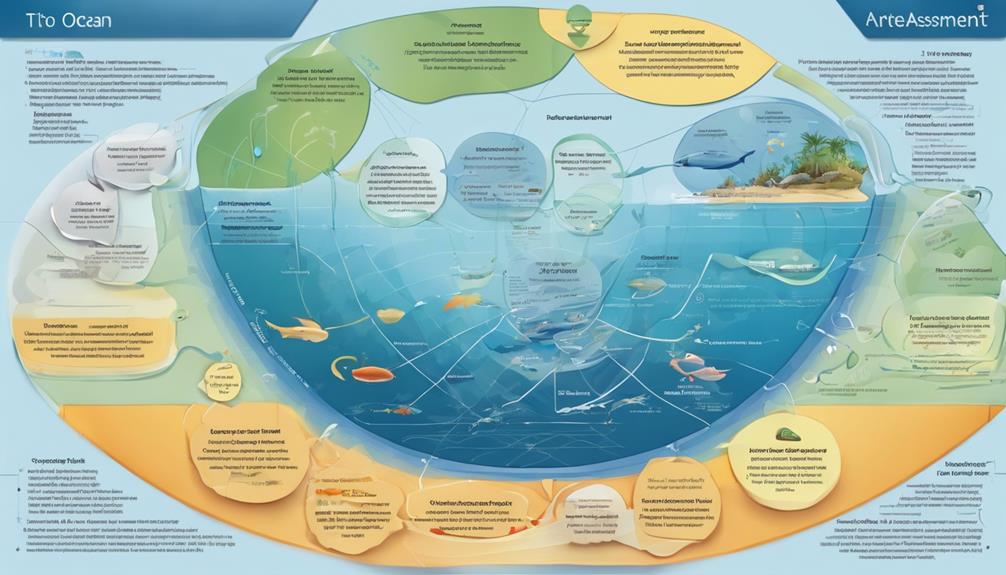
As we explore the extensive waters of our oceans, it is important to recognize that only a mere 7% of the world’s oceans are currently protected. With such a small percentage safeguarded, our comprehension and care for marine environments become essential.
The Ocean Assessment Framework offers a structured path towards sustainable ecosystem management, but what exactly makes this guide a pivotal tool in the realm of marine conservation?
Let's explore the intricate steps laid out within this framework and uncover how it can shape the future of our oceans.
Key Takeaways
- Assess biodiversity, habitat quality, and water conditions for marine ecosystem health
- Utilize data analysis tools to monitor ocean parameters and trends effectively
- Implement conservation measures like Marine Protected Areas and sustainable practices
- Promote respectful behavior towards oceans and support initiatives for marine ecosystem conservation
Importance of Ocean Assessment Framework
The Ocean Assessment Framework stands as an indispensable tool in our efforts to assess the health and sustainability of marine ecosystems. This structured approach allows us to comprehensively understand the impacts of human activities on oceans, paving the way for informed decision-making.
By providing a systematic method for monitoring marine resources, the framework enables us to implement conservation measures effectively. Through assessing oceans using this framework, we can pinpoint key areas requiring intervention and management, thus directing resources where they're most needed.
This process is vital in promoting sustainable practices and safeguarding marine biodiversity, ensuring the long-term health of our oceans. In essence, the Ocean Assessment Framework serves as a beacon guiding our conservation efforts, offering a pathway towards a future where marine ecosystems thrive in harmony with human activities.
Key Indicators for Marine Ecosystems
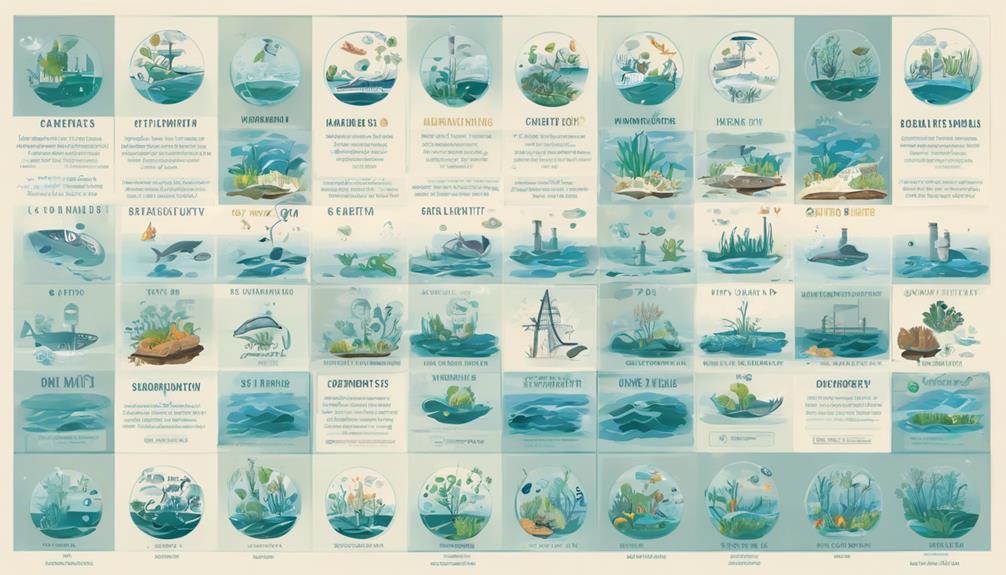
Assessing the health of marine ecosystems involves closely monitoring key indicators such as biodiversity levels, habitat quality, water quality, and population trends of key species. These indicators provide valuable insights into the overall well-being of marine environments. For instance, changes in coral reef health, seagrass coverage, and mangrove distribution are crucial factors that reflect the ecological balance within these ecosystems. Additionally, tracking nutrient levels, presence of pollutants, and ocean acidification levels are essential for understanding the impact of human activities on marine environments.
Population dynamics of fish stocks, migratory patterns of marine species, and changes in sea surface temperature serve as critical indicators for assessing the resilience of marine ecosystems to environmental stressors. Furthermore, monitoring the extent of marine protected areas, presence of invasive species, and trends in marine pollution play a vital role in evaluating the effectiveness of conservation efforts aimed at preserving marine biodiversity. By focusing on these key indicators, scientists and policymakers can make informed decisions to safeguard the health of our oceans for future generations.
Data Analysis for Ocean Assessment
Monitoring and analyzing data on various ocean parameters, such as temperature, salinity, pH, and biodiversity, is essential for comprehensive ocean assessment. Scientists employ advanced tools like satellites, buoys, and research vessels to gather data, which is then subjected to statistical methods and modeling techniques for interpretation.
This data analysis reveals crucial trends, patterns, and anomalies within the ocean ecosystem, providing valuable insights for effective management and conservation strategies. By integrating data analysis into ocean assessment, policymakers, researchers, and conservationists can make informed decisions to promote sustainable ocean management.
The use of sophisticated analytical approaches not only aids in understanding the current state of the oceans but also enables the prediction of future scenarios, facilitating proactive conservation measures. Through meticulous data analysis, we can delve deeper into the intricate workings of the marine environment and work towards preserving its delicate balance for future generations.
Implementing Conservation Measures
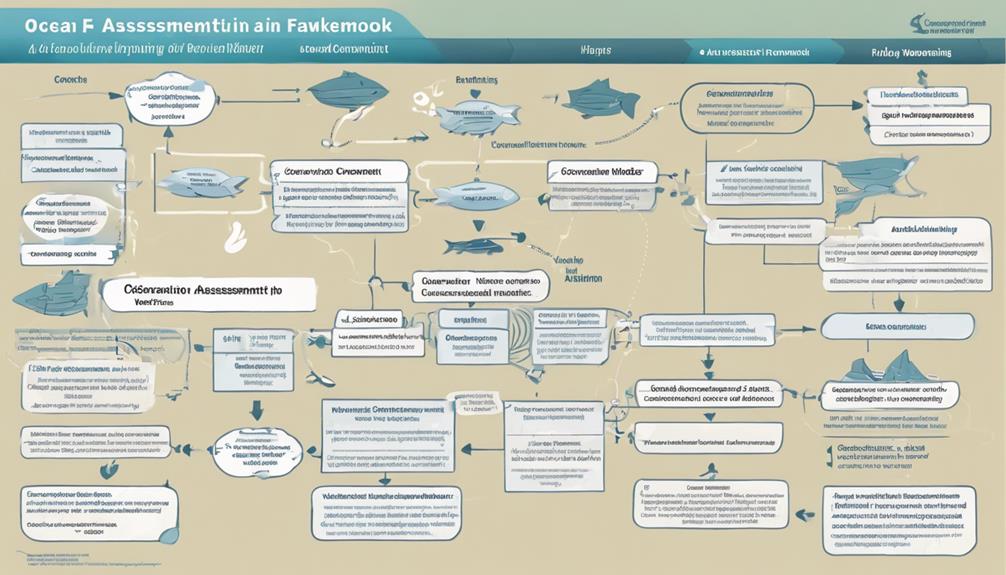
To enhance the preservation of marine ecosystems, a comprehensive approach integrating various conservation measures is essential. When implementing conservation measures, we must consider the interconnectedness of marine life and the delicate balance of the ocean environment. Here are key steps to effectively implement conservation measures:
- Establish Marine Protected Areas: Creating designated zones helps protect biodiversity and critical habitats from human activities such as overfishing and habitat destruction.
- Reduce Threats: Conservation measures focus on mitigating threats like overfishing and pollution that endanger marine species and disrupt the marine ecosystem's equilibrium.
- Promote Sustainable Practices: Encouraging sustainable fishing practices and reducing pollution ensures the long-term health and resilience of marine resources for future generations.
Making a Positive Impact on Oceans
Promoting sustainable practices in ocean conservation is key to making a positive impact on marine ecosystems. By implementing marine spatial planning, we can effectively manage human activities in oceans, reducing harmful impacts on marine life.
Following an ecosystem-based management approach is crucial for the conservation of marine ecosystems, ensuring a balanced and healthy ocean environment. Sustainable practices in utilizing marine resources are essential for the long-term health of our oceans, preventing overexploitation and depletion of vital species.
Integrating environmental concerns into planning processes is fundamental for sustainable ocean management, fostering a holistic approach that considers the interconnectedness of marine systems. Initiatives like Respectzone play a significant role in promoting respectful behavior towards the oceans, encouraging responsible actions that contribute to conservation efforts.
Frequently Asked Questions
What Is the Big 5 Framework Ocean?
We've got you covered!
The Big 5 framework, also known as OCEAN, delves into personality traits like Openness, Conscientiousness, Extroversion, Agreeableness, and Neuroticism. It offers valuable insights into behaviors, work preferences, and values of individuals.
Widely used in psychology and recruitment, the Big 5 model helps in making informed hiring decisions and fostering effective team dynamics. It's a powerful tool for understanding people and optimizing workplace interactions.
What Is the OCEAN 5 Factor Model?
Sure, the OCEAN 5 Factor Model categorizes personality traits into Openness, Conscientiousness, Extroversion, Agreeableness, and Neuroticism.
It's a tool for understanding behavior, values, and work preferences.
Widely used in psychology and recruitment, OCEAN aids in making informed hiring decisions and matching candidates to suitable roles.
Understanding this model enhances recruitment accuracy, contributing to building effective teams.
What Are the 5 Main Components of Personality Represented by the Ocean Model Discussed in Chapter 12?
We find the Ocean model in Chapter 12 detailing 5 key personality components:
- Openness, which measures receptiveness to new experiences and creativity.
- Conscientiousness, covering traits like organization and dependability.
- Extroversion, gauging energy levels around others.
- Agreeableness, assessing interpersonal harmony and pro-social behaviors.
- Neuroticism, which evaluates emotional stability.
These elements collectively provide a comprehensive view of an individual's personality traits.
What Are the Five Letters of Ocean Model?
The five letters of the OCEAN model are Openness, Conscientiousness, Extroversion, Agreeableness, and Neuroticism. These letters represent crucial personality traits that provide deep insights into individual behaviors and workplace dynamics.
Understanding each trait helps in comprehending how individuals interact, handle stress, and approach tasks. Employing the OCEAN model can greatly enhance team building efforts and improve strategies for managing employees effectively.
What Are the Key Steps in Using the Ocean Assessment Framework for Marine Research?
When conducting marine research, utilizing ocean assessment tools is crucial. The key steps in using the Ocean Assessment Framework for marine research involve collecting relevant data, analyzing the information, and interpreting the findings to gain insights into the health and quality of the marine environment.
Conclusion
In conclusion, the Ocean Assessment Framework offers a systematic approach to managing marine ecosystems, ensuring their sustainability and health. By utilizing key indicators and data analysis, we can implement conservation measures that make a positive impact on oceans.
How can we continue to protect and preserve our marine resources for future generations to enjoy?
Eugene brings a fresh, dynamic voice to our platform as one of our talented Writers. Specializing in research-driven content, he explores the latest findings in psychology and personal growth, translating them into actionable insights for our readers. Eugene’s work is fueled by a curiosity about what makes us tick and a desire to help others unlock their potential.
The Big Five (OCEAN)
Top 3 Ocean Assessment Tools for Marine Researchers
Wade into the depths of marine research with the top three ocean assessment tools that are revolutionizing how we explore and conserve our oceans.
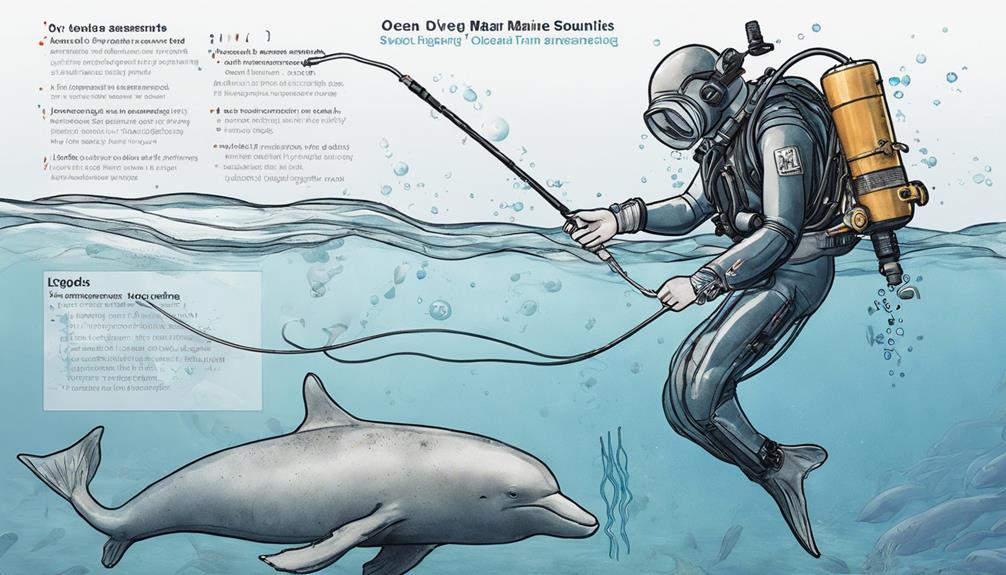
We have all faced the daunting challenge of choosing the best ocean assessment tools for our research projects. But have no fear, as we explore the wide array of options to identify the top three essential tools for marine researchers.
These tools are not only essential but also groundbreaking in their capabilities to unravel the mysteries of the ocean depths. So, which tools made the cut and why are they indispensable assets for those exploring the marine realm?
Stay tuned to discover the key players shaping the future of oceanic research and conservation.
Key Takeaways
- Underwater Drones (ROVs) aid in high-resolution ocean floor mapping and provide access to deep ocean environments.
- Acoustic technology efficiently covers large areas in surveys, helping in tracking fish populations and assessing biodiversity.
- Satellite imaging offers real-time data on ocean parameters, supporting global conservation efforts and monitoring climate change impacts.
- Data analysis tools provide insights into marine ecosystem health, aiding in sustainable management of ocean resources and guiding conservation efforts.
Underwater Drones for Ocean Mapping
Underwater drones, also known as Remotely Operated Vehicles (ROVs), play a crucial role in high-resolution ocean floor mapping for marine researchers. Equipped with cameras, sensors, and sampling devices, these drones allow us to explore the depths of the ocean where human divers can't reach.
The ability to operate at great depths provides us with access to a world teeming with diverse marine organisms and unique ecosystems. ROVs enable us to study the water column, collect samples, and analyze the distribution of species in their natural habitat.
Satellite Imaging for Ocean Monitoring

Satellite imaging plays a pivotal role in ocean monitoring by providing real-time data on essential parameters such as ocean surface temperature, chlorophyll concentration, and sea level height. These images help monitor ocean currents, detect phytoplankton blooms, and track changes in sea ice extent. The table below illustrates some of the key aspects of satellite imaging for ocean monitoring:
| Parameters | Information Provided | Application |
|---|---|---|
| Ocean Surface Temperature | Helps track variations in temperature, aiding in the prediction of weather events. | Monitoring climate change impacts. |
| Chlorophyll Concentration | Indicates levels of phytoplankton, crucial for understanding marine ecosystems. | Detecting phytoplankton blooms. |
| Sea Level Height | Assists in studying sea level rise and ocean circulation patterns. | Monitoring coastal erosion and storm surges. |
Satellite data aids in understanding ocean circulation patterns, identifying marine pollution, and predicting weather events. Researchers utilize satellite imaging to study coral reef health, monitor coastal erosion, and assess the impact of climate change on oceans. The continuous monitoring capabilities of satellite imaging support global efforts in ocean conservation and management.
Acoustic Technology for Marine Surveys
Utilizing acoustic technology, marine researchers employ sound waves to map the seafloor and detect marine organisms in comprehensive surveys. Acoustic surveys play a vital role in studying marine habitats, tracking fish populations, and assessing biodiversity in underwater environments.
Here are four key aspects of how acoustic technology enhances marine surveys:
- Efficient Coverage: Acoustic surveys can efficiently cover large areas, providing researchers with extensive data on marine ecosystems and their overall health.
- Species Identification: By analyzing acoustic data, scientists can identify species distributions, migratory patterns, and even detect underwater structures essential for marine life.
- Conservation Guidance: Acoustic technology is crucial for understanding marine environments, guiding conservation efforts, and promoting sustainable management of ocean resources.
- Ecosystem Health: Acoustic surveys help researchers monitor the health of marine ecosystems, offering valuable insights for preserving these vital habitats.
Frequently Asked Questions
What Are 3 Tools Oceanographers Use?
We use Conductivity-Temperature-Depth (CTD) profilers to measure properties like salinity, temperature, and depth.
Environmental sensors on collecting nets help us gather data on marine organisms.
Satellite data provides crucial real-time information for monitoring.
CTD rosettes collect water samples at various depths.
Remotely Operated Vehicles (ROVs) are essential for exploring ocean depths.
These tools help us study marine environments more effectively and understand ocean processes better.
What Are the 3 Technologies for Studying the Ocean Floor?
When studying the ocean floor, researchers rely on multibeam bathymetric systems for detailed seafloor mapping. Sonar and seismic profiling technologies provide geological insights, while acoustic systems are used for biomass estimation.
These tools collectively offer a comprehensive understanding of oceanic structures, processes, and marine life. By combining these technologies, marine researchers gain valuable data to further our knowledge of the underwater world.
What Are Some Tools Marine Scientists Use to Study the Ocean?
We utilize various tools to study the ocean, including CTD profilers for measuring physical data, multibeam bathymetric systems to map seafloor topography, and acoustic systems for estimating biomass.
Water sampling devices like the CTD/rosette system help gather data for chemical analysis.
Remotely Operated Vehicles (ROVs) allow us to explore ocean depths and conduct research in challenging environments.
These tools provide valuable insights into marine ecosystems and ocean properties.
Which Tool Would a Scientist Use to Study Ocean Currents?
We'd use Acoustic Doppler Current Profilers (ADCPs) to study ocean currents. These instruments measure water velocities at different depths non-intrusively using Doppler technology. ADCPs can be mounted on moorings, boats, or autonomous underwater vehicles for continuous monitoring.
The data they provide is crucial for understanding ocean circulation dynamics and their impact on climate systems. By creating models and forecasts based on ADCP data, we can advance various marine research studies effectively.
How are the Ocean Assessment Tools for Marine Researchers Different from the Global Marine Assessment?
Ocean assessment tools for marine researchers focus on local and specific data collection, analysis, and monitoring of marine environments. In contrast, the global marine assessment provides insights into the overall health and condition of the world ocean, considering a broader perspective on the state of marine ecosystems and resources.
Conclusion
In conclusion, the top 3 ocean assessment tools for marine researchers provide invaluable insights into the health and dynamics of our oceans.
Underwater drones, satellite imaging, and acoustic technology offer precise data for mapping, monitoring, and surveying marine environments.
Their combined capabilities create a comprehensive understanding of ocean ecosystems, aiding in conservation efforts.
The use of these advanced tools enhances our ability to protect and preserve our precious marine resources.
Eugene brings a fresh, dynamic voice to our platform as one of our talented Writers. Specializing in research-driven content, he explores the latest findings in psychology and personal growth, translating them into actionable insights for our readers. Eugene’s work is fueled by a curiosity about what makes us tick and a desire to help others unlock their potential.
-

 Self-Understanding3 months ago
Self-Understanding3 months agoUnderstanding DMCA Protections & Compliance
-

 Relationship Dynamics3 months ago
Relationship Dynamics3 months agoCan a Man Truly Love His Side Chick
-

 Enneagram of Personality1 week ago
Enneagram of Personality1 week agoEnneagram Test: Printable Version for Easy Self-Discovery
-

 Personality Exploration3 weeks ago
Personality Exploration3 weeks agoDiscover Your Traits with Atomic Habits Personality Test
-

 Personality Exploration3 months ago
Personality Exploration3 months agoDOPE Personality Test Explained: Traits & Types
-

 Personality Exploration2 weeks ago
Personality Exploration2 weeks agoAlpha Beta Omega Personality Test Explained
-

 Personality Exploration3 months ago
Personality Exploration3 months agoAlpha Beta Omega Sigma Female Personality Quiz
-

 Self-Understanding2 months ago
Self-Understanding2 months agoDiscover Your Traits with Our Personality Test
